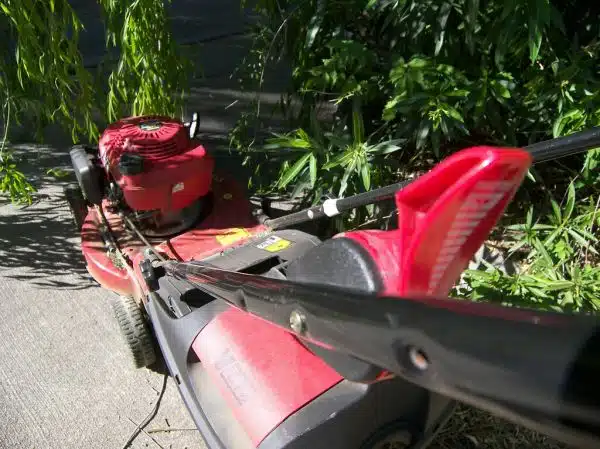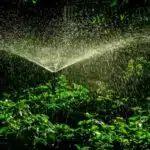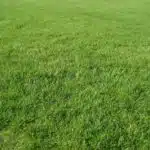Maintaining a lush, green lawn requires more than just regular mowing and fertilization. Adequate watering is crucial to keeping your grass healthy and vibrant. However, determining how long to water your lawn can be a challenge and depends on several factors such as soil type, weather conditions, and grass species.
As a lawn care expert, it is essential to understand the importance of proper watering techniques and help homeowners develop an effective irrigation schedule. By understanding the specific needs of your lawn, you can avoid over or under-watering that can lead to damage or disease. In this article, we will explore the best practices for watering your lawn and provide tips on how long you should water to maintain a healthy and beautiful landscape.
Why Adequate Watering Is Important For Your Lawn
As a lawn care expert, I cannot stress enough the importance of adequate watering for your lawn. It is crucial to have a well-maintained and healthy lawn, and adequate watering is one of the most important factors in achieving that goal. Proper watering helps to maintain healthy root systems, prevent disease, and keep your lawn looking lush and green.
Soil preparation plays an essential role in water conservation, which is not only good for your lawn but also for the environment. By preparing your soil correctly, you can increase its water-holding capacity and reduce runoff. This means that every drop of water goes where it’s needed most – directly to the roots of your grass. Proper soil preparation allows for better absorption of water and nutrients, leading to healthier turf growth.
When it comes to watering your lawn, there is no one-size-fits-all approach. The duration of time you need to water depends on several factors such as soil type, climate conditions, and grass species. Understanding these factors will help you determine how much water your lawn needs and how often you should be irrigating it. In the following section, we will discuss the different types of soil and how they affect watering requirements.
Understanding Your Soil Type
Soil moisture is an essential factor to consider when watering your lawn. The type of soil you have will determine how much water it can hold and how long it can retain it. There are different types of soil, such as sandy, loamy, and clay soils, and each has unique characteristics that affect its water retention capacity.
Sandy soil has large particles with big spaces between them, which makes it easy for water to pass through quickly. This type of soil drains rapidly and does not retain much water. On the other hand, clay soil has small particles that are packed tightly together, making it difficult for water to penetrate. This type of soil retains a lot of water but drains slowly. Loamy soil is the best type of soil for lawns because it is a combination of sand, silt, and clay soils. It holds enough moisture while allowing excess water to drain away.
To determine your lawn’s ideal watering schedule, you need to know your soil type’s water retention capacity. Sandy soils require frequent watering because they dry out faster than other types of soils. Clay soils need less frequent watering but more extended periods because they take longer to absorb moisture. Loamy soils require moderate watering but less frequently than sandy soils.
Understanding your soil type’s characteristics will help you make informed decisions about watering your lawn and ensure healthy grass growth. In the next section, we will explore how weather conditions impact watering requirements for lawns.
The Impact Of Weather Conditions On Watering
As a lawn care expert, it is important to understand the impact of weather conditions on watering your lawn. Weather conditions play a crucial role in determining the frequency and duration of watering your lawn. During hot and dry weather, the soil loses moisture quickly, necessitating frequent watering to maintain soil health.
The impact of watering frequency on soil health cannot be overstated. Over-watering can lead to water-logging, which deprives the roots of oxygen and hampers their growth. On the other hand, under-watering can cause the soil to become compacted, making it difficult for roots to penetrate and absorb nutrients. To maintain optimal soil health, it is important to find a balance between under-watering and over-watering.
Importance of watering during drought conditions cannot be emphasized enough. During droughts, lawns require more frequent watering than usual to keep them healthy and green. However, it is important not to waste water by watering during non-peak hours when evaporation rates are low. It is recommended that lawns receive at least 1 inch or more of water per week during drought conditions.
It is clear that weather conditions have a significant impact on how long you should water your lawn; however, different grass species also have unique watering needs that must be taken into account. In the subsequent section, we will explore these different grass species and their specific requirements for optimal growth and maintenance.
Different Grass Species And Their Watering Needs
Grass type selection is a critical factor in determining watering needs. Different grass species have varying tolerances to drought and waterlogging. For instance, cool-season grasses such as Kentucky Bluegrass and fescue require more frequent watering than warm-season grasses like Bermuda grass and St. Augustine. Cool-season grasses are also susceptible to overwatering, which can lead to root rot and other diseases.
Watering frequency adjustment is another important aspect of lawn care that should be considered. During hot summer months or periods of drought, lawns may require more frequent watering than during cooler seasons or when rainfall is abundant. It’s essential to monitor the moisture level of your lawn regularly to determine when it needs watering. A useful tool for this purpose is a soil moisture meter, which can help you determine when it’s time to water your lawn.
In conclusion, proper watering techniques are an essential component of maintaining a healthy lawn. By selecting the right grass species for your region and adjusting your watering frequency accordingly, you can ensure that your lawn remains lush and green throughout the year. In the next section, we’ll discuss signs that indicate your lawn needs more water so that you can take action before it’s too late.
Signs Your Lawn Needs More Water
- One sign that your lawn needs more water is a lack of color. Without adequate moisture, the grass will lose its vibrant green hue and begin to appear dull.
- Wilting is another sign that your lawn needs more water. Wilting grass blades will begin to curl and fold, and the turf may start to thin in areas.
- Dry patches are also an indicator that your lawn is not receiving enough water. Dry patches result from inadequate water and can give the lawn an uneven appearance.
- It is important to water your lawn correctly to meet its specific needs. The frequency and amount of water needed will depend on the type of grass and the climate.
- To ensure that your lawn stays healthy and vibrant, it is best to water it early in the morning so that the grass blades can absorb the water before the heat of the day sets in.
- It is also important to water your lawn deeply, as this will encourage the grass to grow deeper roots, making it more resilient and able to withstand periods of drought.
Lack Of Color
As a lawn care expert, it is not uncommon to receive inquiries regarding the lack of color in a lawn. This issue can be caused by various factors including insufficient watering. When a lawn lacks color, it may appear pale or yellowish. This is because the grass is not receiving enough water to acquire the necessary nutrients for growth. It is essential to identify this problem early on as it can lead to severe damage if left unchecked.
The impact of nutrients in watering your lawn cannot be overstated. Watering alone does not guarantee a healthy and vibrant lawn; nutrients are also required for optimal growth and development. Adequate watering coupled with sufficient nutrient supply will ensure that your lawn remains green and lush all year round. Prevention techniques such as fertilization can play a vital role in ensuring that your lawn receives the necessary nutrients required for healthy growth.
In conclusion, if you notice your lawn’s lack of color, it may be an indication that your grass is not receiving enough water. As a lawn care expert, I recommend ensuring that your lawn receives adequate watering, coupled with proper nutrient supply through fertilization and other prevention techniques. By doing so, you can achieve a beautiful and vibrant lawn that will enhance the overall aesthetics of your property.
Wilting
Another common sign that your lawn needs more water is wilting. Wilting occurs when the grass blades start to curl and fold in on themselves, making the lawn appear dry and lifeless. This happens because the grass is not receiving enough water to keep its structure intact. Wilting can be a result of different factors, including infrequent watering or poor soil quality.
Preventing wilting requires ensuring that your lawn receives enough water frequently. It is recommended that you water your lawn at least once a week, with each watering session lasting 30-60 minutes. However, it’s important to note that the watering frequency may vary depending on factors such as temperature and rainfall. Ensuring that your lawn receives sufficient water will not only prevent wilting but also promote healthy growth and development.
In addition to frequent watering, preventing wilting requires paying attention to other factors such as soil quality and drainage. Poor soil quality can hinder the absorption of water by the roots, leading to wilting even when there’s enough moisture in the ground. On the other hand, good drainage ensures that excess water doesn’t accumulate in one spot, depriving other areas of much-needed moisture. By addressing these issues alongside frequent watering, you can prevent wilting and maintain a healthy-looking lawn throughout the year.
Dry Patches
Another sign that your lawn needs more water is the development of dry patches. These are areas of the lawn where the grass has died or turned brown due to insufficient moisture. Dry patches can form for various reasons, including infrequent watering, poor irrigation systems, or high temperatures. They are unsightly and can ruin the overall appearance of your lawn.
To prevent dry patches from forming, it’s essential to ensure that your lawn receives enough water at the right frequency. Depending on your location and the time of year, you might need to water your lawn more frequently than once a week to prevent dry patches from forming. It’s also crucial to invest in an efficient irrigation system that can distribute water evenly across your lawn. A good irrigation system will help prevent overwatering in some areas while neglecting others.
If you notice dry patches forming on your lawn despite regular watering and a good irrigation system, it may be time to examine other factors such as soil quality and compaction. Soil compaction can make it difficult for water to penetrate deep into the ground, leading to dry patches on the surface. In contrast, improving soil quality by adding organic matter or fertilizers can help retain moisture in the soil and prevent dry patches from forming. By regularly monitoring these factors alongside watering frequency and irrigation systems, you can maintain a healthy-looking lawn throughout the year without any unsightly dry patches.
The Dangers Of Over-Watering Your Lawn
Did you know that over-watering your lawn can be just as harmful as under-watering it? In fact, according to a recent study, over-watering can waste up to 50% of the water used for irrigation. This is not only wasteful but can also lead to a variety of problems that may negatively impact the health and appearance of your lawn.
The dangers of over watering your lawn are many. Over saturation of the soil can lead to root rot, which in turn will cause your grass to wither and die. Additionally, standing water creates an ideal breeding ground for pests such as mosquitoes and other insects that can harm both you and your pets. Finally, over watering can also lead to excessive growth in weeds, which will compete with your grass for nutrients and ultimately take over if left unchecked.
To avoid these issues, here are some tips for avoiding over watering:
- Use a rain gauge or moisture meter to determine when your lawn needs watering.
- Water in the early morning or late evening when temperatures are cooler.
- Adjust sprinklers so they don’t spray onto hard surfaces like driveways or sidewalks.
By following these simple tips, you’ll not only save water but also ensure the health and vitality of your lawn. Remember that less is often more when it comes to watering!
Moving on from the dangers of over watering, let’s take a look at signs and risks associated with under-watering your lawn.
Under-Watering Your Lawn: Signs And Risks
Over-watering your lawn can be detrimental to its health, but so is under-watering. While a dry spell may cause you to reach for the hose more frequently, watering frequency should be determined by soil moisture rather than weather conditions. Neglecting to water your lawn adequately can lead to a host of problems that will ultimately impact the appearance and overall health of your lawn.
One sign that your lawn is not receiving enough water is yellowing or browning blades of grass. Additionally, if footprints remain visible on your lawn after walking across it, it’s an indication that the soil isn’t retaining enough moisture. Other signs include wilting leaves and a lack of new growth. Address these symptoms promptly by adjusting your watering schedule accordingly.
To determine how much water your lawn needs, it’s important to measure soil moisture levels regularly. A simple way to do this is by using a screwdriver or similar tool to test the soil’s firmness and depth of moisture penetration. Alternatively, invest in a soil moisture meter from your local garden center. By monitoring soil moisture levels, you’ll be able to adjust watering frequency based on the specific needs of your lawn and avoid both over- and under-watering.
Transition: Now that we’ve discussed the risks associated with under-watering your lawn, let’s dive deeper into measuring its water needs for optimal health and appearance.
Measuring Your Lawn’s Water Needs
Picture your lawn as a thirsty child. Just like how you wouldn’t give a glass of water to a child without measuring the accuracy of the amount needed, it’s important to measure the accuracy of watering your lawn. Overwatering can lead to shallow root growth and fungus growth, while underwatering can cause your grass to wilt and die. Therefore, it’s crucial to understand how much water your lawn needs.
Watering frequency is dependent on several factors such as climate, soil type, grass species, and sun exposure. On average, most lawns need about 1-1.5 inches of water per week which includes rainfall. However, during hot summer days or extended drought periods, more frequent watering may be necessary. It’s recommended that you water only when necessary rather than sticking to a strict schedule.
Measuring accuracy is key when determining how long you should water your lawn. To ensure proper saturation, use a rain gauge or empty tuna can placed within range of sprinklers and measure the amount of water collected after each watering session. This method will help you calculate the right amount of time required for subsequent watering sessions based on how much water was collected in the container during previous sessions. Remember that every lawn is unique and requires different amounts of water; therefore it’s important to monitor its health regularly and adjust your watering schedule accordingly.
Now that you know how often to water your lawn and have learned about measuring accuracy, let’s move onto calculating the right amount of water for your lawn by incorporating other factors such as sprinkler output rate and soil type.
Calculating The Right Amount Of Water For Your Lawn
- Assessing soil moisture is important for determining how often and how much water needs to be applied to a lawn.
- To determine the optimal watering frequency, consider the type of grass, amount of sunlight, and soil type.
- Measuring water amounts is best accomplished by using a soil moisture meter or a rain gauge.
- Soil moisture meters are useful for determining the amount of water a lawn needs.
- Rain gauges can be used to measure the amount of water that has been applied to the lawn.
- Knowing both the amount and frequency of water applied can help ensure your lawn is receiving the right amount of water.
Assessing Soil Moisture
As a lawn care expert, I understand the importance of assessing soil moisture when trying to calculate the right amount of water for your lawn. This crucial step will not only save you money on your water bill but also prevent overwatering and potential damage to your grass. It’s essential to measure soil moisture before watering your lawn to ensure that you’re providing enough water without drowning your grass.
One effective way to measure soil moisture is by using technology such as a soil moisture meter or probe. These tools allow you to get an accurate reading of the soil’s moisture content at various depths, helping you determine whether or not it’s time to water your lawn. It’s important to note that different types of grass have varying moisture needs, so be sure to research the specific requirements for your type of grass.
Overall, assessing soil moisture is a critical component in calculating the right amount of water for your lawn. Using technology such as a soil moisture meter or probe can help you get an accurate reading and prevent overwatering or underwatering. By taking this extra step, you’ll not only save money on your water bill but also maintain healthy and vibrant green grass all season long.
Determining Watering Frequency
Now that we have discussed how to measure soil moisture, the next step in calculating the right amount of water for your lawn is determining watering frequency. Watering duration and frequency management are essential factors in maintaining a healthy lawn. However, it’s important to note that there is no one-size-fits-all approach as different factors such as grass type, weather conditions, and soil type will affect watering needs.
One way to determine watering frequency is by conducting a simple test known as the screwdriver test. This involves sticking a screwdriver or any long metal object into the soil after watering and checking how deep it goes. If the screwdriver goes through easily, then your lawn has enough water. However, if it’s difficult to push through, it means your soil is still dry and needs more water. Another method is by monitoring precipitation levels and adjusting watering schedules accordingly.
In conclusion, determining watering frequency is crucial in achieving a well-maintained lawn. By conducting regular tests using methods such as the screwdriver test or monitoring precipitation levels, you’ll be able to adjust your watering schedule accordingly and prevent overwatering or underwatering. Remember that every lawn is unique, so it’s essential to research specific requirements for your type of grass and soil type.
Measuring Water Amounts
Now that we have discussed watering frequency, let’s move on to the next step in calculating the right amount of water for your lawn: measuring water amounts. It’s important to note that overwatering can lead to shallow root growth, while underwatering can cause stress and damage to your lawn. Therefore, it’s essential to determine the correct amount of water needed for your lawn.
One way to measure water amounts is by using a rain gauge. This tool measures how much precipitation your lawn receives, allowing you to adjust watering schedules accordingly. Another method is by using an irrigation controller with a water flow meter, which measures how much water your sprinkler system uses. This allows you to adjust watering duration and frequency based on actual usage.
It’s also important to understand that different soil types will require different amounts of water. For example, sandy soils drain quickly and require more frequent watering but less duration, while clay soils hold onto moisture longer and require less frequent but longer duration watering sessions. By understanding your soil type and its specific needs, you can effectively measure the right amount of water for your lawn.
In conclusion, measuring water amounts is crucial in maintaining a healthy lawn. By utilizing tools such as rain gauges or irrigation controllers with flow meters and understanding your soil type’s needs, you can accurately determine the right amount of water needed for your lawn without wasting resources or causing damage from over or underwatering. Remember to always consider factors such as weather conditions and grass type when adjusting watering frequency and duration.
Tips For Efficient Irrigation
To ensure that your lawn receives the right amount of water, it is important to use water-saving techniques. One effective technique is to adjust your irrigation system’s settings based on the weather conditions. For example, during hot and dry weather, you may need to increase the watering duration and frequency. However, during cooler temperatures or periods of rain, you can reduce watering time to prevent over-saturation.
Another useful strategy for efficient irrigation is regular maintenance of your irrigation system. Check for leaks or clogs in the sprinkler heads regularly and replace damaged parts as necessary. Additionally, consider installing a rain sensor that automatically turns off your system when it detects rainfall. This prevents unnecessary watering and saves both water and money.
By utilizing these water-saving techniques and maintaining your irrigation system properly, you can help conserve water while maintaining a healthy lawn. In the next section, we will discuss the optimal time of day for watering your lawn to further improve its health and appearance.
Tips for Efficient Irrigation:
- Adjust irrigation settings based on weather conditions
- Regularly maintain your irrigation system to prevent leaks or clogs
- Install a rain sensor to automatically turn off your system during rainfall
With these tips in mind, you can save water and money while keeping your lawn looking its best. Now let’s explore the importance of watering at the right time of day for optimal results.
Watering Your Lawn At The Right Time Of Day
Watering your lawn at the right time of day can have a significant impact on its growth. The two most popular times of day to water your lawn are in the morning and evening. While both times have their advantages, there is one that stands out as the best choice for optimal plant growth.
Morning watering is generally considered the best time of day to water your lawn. This is because the cooler temperatures and lower windspeeds allow for less evaporation and more absorption into the soil. Additionally, watering in the morning gives your lawn ample time to dry before nightfall, which helps prevent fungal diseases from developing.
On the other hand, evening watering can still be beneficial for your lawn, but it should be avoided in areas with high humidity or where fungal diseases are common. The higher humidity levels at night make it easier for fungus to develop on damp grass blades. However, if you live in a drier climate or have a sprinkler system with good drainage capabilities, evening watering may be a suitable option.
Considering these factors will help ensure that you are making an informed decision when it comes to watering your lawn. In the next section, we will discuss the role of sprinkler systems in lawn irrigation and how they can help maintain optimal watering conditions for your lawn.
The Role Of Sprinkler Systems In Lawn Irrigation
- Installing an efficient sprinkler system is an important first step in ensuring effective lawn irrigation.
- Properly configuring the system and selecting the right sprinkler heads are key components of a successful installation.
- Regular maintenance of the sprinkler system is essential to keep the system running smoothly and efficiently.
- This includes checking for clogged nozzles, evaluating the water pressure, and making sure the sprinkler system is properly adjusted to water the lawn evenly.
Installing Sprinkler Systems
As a lawn care expert, I understand the importance of installing sprinkler systems for effective lawn irrigation. A well-designed irrigation system allows water to be distributed evenly across your lawn, ensuring that your grass receives the hydration it needs to thrive. But how long should you water your lawn with a sprinkler system?
When it comes to watering your lawn, there is no one-size-fits-all answer. The length of time you should run your sprinkler system depends on a variety of factors, including the type of soil in your yard, the weather conditions, and the type of grass you have. However, as a general rule of thumb, most lawns require about 1 inch of water per week. This can be achieved by running your sprinkler system for approximately 30 minutes per session, two to three times per week.
To ensure that your sprinkler system is working effectively and efficiently, regular maintenance is key. Be sure to check for any leaks or damaged components and replace them as needed. Additionally, consider implementing water conservation techniques such as adjusting the timing of watering sessions based on weather conditions or using drought-resistant grass varieties.
In conclusion, installing a sprinkler system can greatly improve the health and appearance of your lawn. While there is no set time limit for watering with a sprinkler system, aim for approximately 30-minute sessions two to three times per week to provide sufficient hydration for most lawns. Don’t forget to prioritize regular maintenance and implement water conservation techniques to keep both your lawn and our planet healthy and thriving.
Sprinkler System Maintenance
Now that we’ve discussed the importance of sprinkler systems in lawn irrigation and how long to water your lawn, let’s shift our focus to an equally important aspect: maintenance. Regular upkeep ensures that your sprinkler system remains effective and efficient in providing hydration to your lawn.
One crucial maintenance task is sprinkler system troubleshooting. Check for any leaks, clogs, or damaged components that may affect the water distribution. Fixing these issues promptly can prevent further damage and save you from costly repairs in the future. Additionally, regular cleaning of sprinkler heads can prevent debris buildup and ensure even water distribution.
If you’re a DIY enthusiast, there are several irrigation solutions you can implement to maintain your sprinkler system effectively. For instance, installing a rain sensor can prevent unnecessary watering during rainfall and reduce water waste. Another option is using drip irrigation for garden beds or smaller areas where it may be difficult for traditional sprinklers to reach.
In summary, proper maintenance is essential for ensuring that your sprinkler system functions effectively and efficiently. Sprinkler system troubleshooting, regular cleaning of components, and implementing DIY irrigation solutions can help keep your lawn healthy while reducing water waste. By prioritizing maintenance, you’ll not only save money on repairs but also contribute to sustainable lawn care practices.
Drip Irrigation: A More Efficient Option?
Efficient watering techniques are essential for maintaining a healthy lawn without wasting water. One such method is drip irrigation, which involves using a network of tubes and emitters to deliver water directly to the roots of plants. This technique can reduce water usage by up to 50% compared to traditional sprinkler systems.
The benefits of drip irrigation go beyond water conservation. By delivering water directly to the roots, plants receive a consistent supply of moisture that reduces the risk of over or under watering. Additionally, because the soil around the roots remains moist rather than constantly wet, there is less opportunity for disease and pests to take hold. The result is a healthier lawn with fewer maintenance requirements.
While drip irrigation may require an initial investment in equipment and installation, it quickly pays for itself through reduced water bills and maintenance costs. With proper installation and maintenance, drip irrigation can be an effective solution for homeowners looking for an efficient watering system that promotes healthy plant growth.
Moving forward, it’s important to monitor your lawn’s moisture levels regularly so you can adjust your watering schedule accordingly. In our next section, we’ll explore tools and techniques for monitoring your lawn’s moisture levels to ensure you’re providing just the right amount of hydration for optimal growth.
Tools And Techniques For Monitoring Your Lawn’s Moisture Levels
Drip irrigation is a popular method for watering lawns because of its efficiency, but it’s important to know how long to water your lawn regardless of the method you choose. The answer to this question depends on several factors, such as the type of grass you have, the climate you live in, and the time of year. However, there are tools and techniques available for monitoring your lawn’s moisture levels to ensure that you’re giving it the right amount of water.
One tool that can be helpful is a moisture meter. These devices measure the amount of moisture in your soil so that you can determine if it needs more water or not. Moisture meters are easy to use and can provide accurate readings quickly. Another option is using soil probes, which allow you to take samples from different areas of your lawn and test them for moisture content.
By using these tools and techniques for monitoring your lawn’s moisture levels, you can avoid overwatering or underwatering your lawn. Overwatering can lead to problems like fungal growth and shallow roots, while underwatering can cause brown spots and thinning grass. It’s important to find the right balance so that your lawn stays healthy and beautiful.
In conclusion, achieving a beautiful lawn through proper watering techniques requires attention to detail and careful monitoring of your lawn’s moisture levels. By using tools like moisture meters and soil probes, you can ensure that your lawn is getting the right amount of water without wasting resources or damaging your grass. With a little effort, you can enjoy a lush green yard all year round.
Conclusion: Achieving A Beautiful Lawn Through Proper Watering Techniques
To achieve a lush, green lawn, one must understand the importance of proper watering techniques. A common question that arises is how long should one water their lawn. The answer to this question can vary depending on various factors such as soil type, weather conditions, and grass type.
Watering frequency is an essential aspect of maintaining a healthy lawn. It is recommended to water deeply and infrequently rather than frequently and shallowly. Watering deeply allows the roots to grow deep into the soil, making them more resilient to drought conditions. However, it is crucial not to overwater as excessive watering can lead to root rot and other diseases.
Creating a watering schedule can help ensure your lawn receives adequate water without wasting resources. A general rule of thumb is to water once or twice a week for 30 minutes or until the soil has been moistened at least six inches deep. Of course, this may vary depending on your location and weather patterns. It’s also important to adjust your watering schedule accordingly during rainy seasons or periods of drought.
Proper watering techniques are vital in achieving a beautiful lawn that will make your neighbors envious. Remember the importance of deep watering and creating a consistent watering schedule that aligns with your location’s climate and soil type. With these tips in mind, you’ll be on your way to having a healthy and vibrant lawn all year round!
Conclusion
Proper watering techniques are crucial in maintaining a beautiful and healthy lawn. Understanding your soil type, the impact of weather conditions, and the watering needs of different grass species are all important factors to consider when determining how long to water your lawn. By utilizing tools such as sprinkler systems and drip irrigation, you can ensure that your lawn is receiving the right amount of moisture.
It is essential to monitor your lawn’s moisture levels regularly to avoid over or under-watering. Signs such as wilting or discolored grass indicate that your lawn needs more water. As a lawn care expert, I recommend implementing efficient irrigation techniques and using high-quality equipment to achieve optimal results.
By following these guidelines for adequate watering, you can maintain a lush and thriving lawn that enhances the aesthetic appeal of your home. Remember, taking care of your lawn requires perseverance and diligence but ultimately results in an outdoor space that evokes tranquility and beauty.
Image Credits
- “Lawns” by jezuez471 (featured)





























